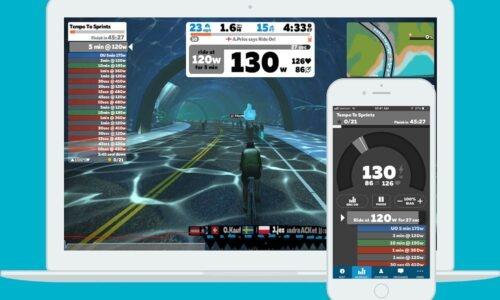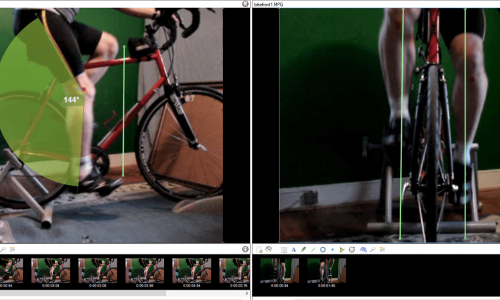Knowing about mountain bike brakes comes in handy when you are thinking of upgrading or checking out a bike’s specification before buying. You will see most decent bikes either have Shimano or SRAM brakes fitted.
But there are lots of different models from each brand. Therefore, in this guide to SRAM MTB Disc brakes, we will go through the options to give you a better idea of what is out there.
How Many Pistons?
SRAM MTB disc brakes either come with two or four pistons. In a nutshell, four pistons give you more stopping power than two. Therefore, brakes with four pistons are better while descending.
However, two-piston brakes may suit you better if you spend a lot of time riding cross country. You will save weight and possibly some money by opting for two-piston brakes, depending on the model.
In the SRAM MTB disc brake range, it is easy to tell which ones have two or four pistons. The two-piston brakes have the prefix of “Level”, and the four-piston versions are known as Guide, G2 or Code.
The Level Range Of SRAM MTB Disc Brakes
The Level range is broken up into five different models:
- Level
- Level T
- Level TL
- Level TLM
- Level Ultimate
SRAM Level vs. Level T
The Level, is the entry-level two-piston SRAM disc brakes, with a two-piece caliper using the G2 rotor. As this is an entry-level model, you can expect it to be the heaviest in the line-up, at 430g.
The good thing about the Level, is that it now has elements found in higher-end SRAM brakes. For example, it has an alloy Direct Link brake lever and an expandable bladder.
This new bladder reduces air bubbles, to ensure that you get good pressure and modulation. This is enhanced by the timing port closure system, which pressurizes the system to improve stopping power.
There isn’t a whole lot of difference between the Level and the Level T. However; the Level T uses a two-bolt Matchmaker clamp. This is SRAM’s tried and tested cockpit organization system.
It allows you to use the clamp for shifters, your dropper post trigger and suspension lockouts. So if you want to tidy up your handlebars while shaving off a few grams, the Level T is the one to choose.
The one thing that you may not like about the lever on either model, is that the reach adjustment is located just under the lever blade. You have to use an Allen key to get it just right.
This is a bit frustrating, as you may find that you have to take the lever off your handlebar to reach it.
Both the Level and Level T use the same calipers, that use the Centreline rotors. These measure 140mm on the rear and 200mm on the front wheel.
SRAM Level TL vs. TLM
The Level TL mixes components from the Level T and the higher-end Level TLM. This system uses the same caliper as the Level T and mates it to the DirectLink brake lever used on the more expensive Level TLM and Ultimate.
This means both systems use the hinged Matchmaker X clamp, allowing you to fit the right gear shifter on your right lever and your dropper post on the left one.
SRAM has redesigned the bladder in the lever’s shape, to reduce the occurrence of air bubbles. This new shape takes air from the lever and improves pressure and feel. It also uses the same timing port closure system found throughout the Level range of SRAM brakes, to enhance braking power.
However, this version utilizes a stainless steel heat shield to prevent the caliper’s heat from transferring to the brake fluid. This is a good touch, as boiled brake fluid is not much fun when taking on a steep descent.
If you are a cross-country mountain biker, both the Level TL and TLM are good options. The TLM is better than the TL, and cheaper than the Ultimate, but it is pretty lightweight at just 365g. The TLM setup’s caliper is just one piece, which gives it a 5g weight advantage over the two-piece calipers you get with the TL.
The Level TL and TLM make maintenance a little easier using SRAM’s “Bleeding Edge” technology. This means that SRAM has located the bleed port to the bottom of the caliper. Using the special tool, you easily bleed the system without too much fuss.
SRAM Level TLM vs Level Ultimate
The Level Ultimate sits above the Level TLM, at the top of SRAM’s two piston range. Here you will see a carbon brake lever, and the lever pivot has a bearing improving feel. You will also find the Ultimate has the excellent Bleeding Edge tech.
As you would expect, the Level Ultimate features the Direct Link lever, expandable bladder and the Timing Port Closure found on the TLM. It also includes the stainless steel heat shield on the caliper.
The Ultimate has a lot in common with the TLM. But the main differences are that the Ultimate comes with the carbon lever and rainbow Ti hardware. These different components give the Ultimate a weight saving, bringing the weight down to 318g.
If you opt for the SRAM Level brakes, it is recommended to fit your bike with Centerline CLX rotors for the best combination.
When you compare the TLM to the Ultimate, you should not consider the TLM to be a bad choice. You don’t get the two-piece rotors, titanium hardware or carbon lever blades, but they do perform very similarly.
If you have some extra cash, go for the Ultimate, but you won’t be disappointed in the TLM as an excellent two piston brake caliper for cross country riding.
SRAM’s Four-Piston MTB Disc Brakes
SRAM’s four-piston MTB disc brakes line-up is as follows:
- Guide T
- Guide RE
- Guide R
- Guide RS
- Guide RSC
- G2 Ultimate
- Code R
- Code RSC
SRAM Guide T Vs. RE
SRAM’s Guide T MTB disc brakes are friendly to your bank account and are a good option if you are considering upgrading from two-piston brakes.
The Guide T setup uses SRAM’s S4 caliper, which features the same 14/16mm pistons found in higher-end calipers. They also have a heat shield, to protect your brake fluid from the heat built up from friction.
The Guide RE’s caliper is the same design as the one used on SRAM Code brakes, which is a downhill caliper. This makes the Guide RE well priced for the amount of stopping power it gives you.

The Guide RE is found on quite a few electric mountain bikes and some fantastic enduro bikes. This is because they can easily handle the high speeds and extreme conditions these bikes are used in, and the extra weight electric mountain bikes have.
On the Guide T, you can adjust the brake lever’s reach, but it is similar to the Level brakes. Meaning you need to use an Allen key, which is slightly annoying, but this is not something you need to do too often.
The Guide RE doesn’t require an Allen key to adjust the reach, as it is fitted with a thumbscrew to tweak it on the fly. The Guide RE uses the same alloy levers as the Guide R and Code calipers. The levers have a bush instead of a bearing like you find on the Level brakes.
Both the Guide T and RE come with the Bleeding Edge system, and the Direct Link lever gives you good feeling through both brake systems. The Guide RE uses a Piggyback reservoir, allowing the system to manage the fluid better and to easily swap the levers over to either side of the bars.
You also get the Timing Port Closure system found on the Level TLM option. The Matchmaker X clamp that attaches the levers to your bars is the same one you get with the higher-end Level and Guide brakes.
The Guide T brakes are lighter than the Level, at 280g each. Therefore, they are powerful and light. Weighing in at 415g each, the SRAM Guide RE’s are not exactly lightweight, but with the tremendous stopping power they give you, I doubt that you will be too put out by it, especially at their reasonable price.
Guide R vs. Guide RS
The Guide R comes in above the Guide T. These brakes have the tool-less reach adjustability, and the clamp is compatible with the Matchmaker X clamp.
Using the Direct Link levers, Timing Port Closure System, Piggyback Reservoir and the redesigned bladder, you can be sure that you have a great feel, modulation and reliability. The calipers used on the R and RS is the same S4 item used with the Guide T.
This includes the heat shields and Bleeding Edge tech. On the Guide R, Each lever and caliper weighs in at 392g, while the Guide RS is 384g per wheel.
The Guide RS is the same as the Guide R, but it features SRAM’s SwingLink. This new development uses a cam, reducing the amount of movement to squeeze the pads on to the rotor.
This system replaces the Direct Link lever but still retains good modulation. The RS’s main advantage over the R is the feeling you get from the brake levers because of the SwingLink and the slight weight saving.
SRAM Guide RSC Vs. G2 Ultimate
The new Guide RSC is equipped with a new powerful caliper. The caliper is designed to flex less to transfer the power more directly. SRAM decided to do away with aluminum pistons for the Guide RSC. Instead, they opted for phenolic pistons.
These are made from a hard plastic resistant to heat, meaning the heat shields are not needed. The goal of using these pistons is to reduce weight.
To give the Guide RSCs a more aggressive bite and reduced brake fade, SRAM includes “Power Organic” brake pads. This is a new compound that gives you an additional 7% in braking power, and you can buy them separately to replace your current pads.
A nice touch included on the Guide RSC is the bite point adjustment. This allows you to choose the point in the lever’s movement when the brakes are applied. The lever has a pivot bearing to give you a light and accurate feel. Each brake and lever combo weighs in at 255g.
Sitting at the top of the Guide range is the G2 Ultimate and is considered to be an evolution of the Guide range and brings them very close to the performance of the SRAM Code downhill brakes.
This brake setup isn’t cheap, but it is SRAM’s lightest four-piston system. It has had all the features and top-end materials thrown at it to make a superb braking system.
The G2 gives you tremendous stopping power, modulation, feel and lots of adjustability. It features the same caliper as the new Guide RSC, the new Power Organic pads and the carbon lever has pivot bearings. This carbon and the titanium components bring the G2 Ultimate’s weight down to 242g.
Choosing between these two brake systems is really down to budget. The G2 Ultimate is considerably more expensive than the Guide RSC, but either would be an excellent choice for a trail or enduro bike.
Code R Vs. RSC
Traditionally SRAM Code brakes have been used by downhillers. But, recently we have been seeing them on more enduro bikes and electric mountain bikes. This is because these riders demand more stopping power, as they are taking on much tougher terrain with steeper and longer descents.
The Code R is the least expensive, and it uses the Direct Link lever and an oversized four-piston caliper. Both systems differ from the 14/16mm versions you find on the Guide T, R and RS, as they have 15/16mm calipers.
You can adjust the lever’s reach without an Allen key on both the Code R and RSC. The Code R uses a bush, while the Code RSC has the SwingLink lever, and bearings to improve feeling and modulation. They both feature the Bleeding Edge tech, Expandable bladder, Timing Port Closure and Heat Shield. But to further manage the heat, Code brakes have 30% more fluid than Guides.
The Code RSC has better feeling and modulation than the R, and the titanium rainbow hardware looks fantastic. The Code RSC weighs precisely the same as the Code R, so which you choose is down to your budget, the aesthetics and if you want a more precise feeling in your brake levers.
Final Thoughts
As you can see, there is quite a wide range of SRAM MTB disc brakes to choose from. Which one you choose will all depend on how much money you want to spend, how much stopping power you want and if weight is an issue for you.
No matter which you go for, there will always be a compromise, but you need to decide which characteristic is the most important to you.

Tom Fortune has been reviewing cycling products for several years from his home in the French Alps. As the owner of mtb-threads.com, he mainly reviews mountain bike products but also reviews road cycling products independently.






